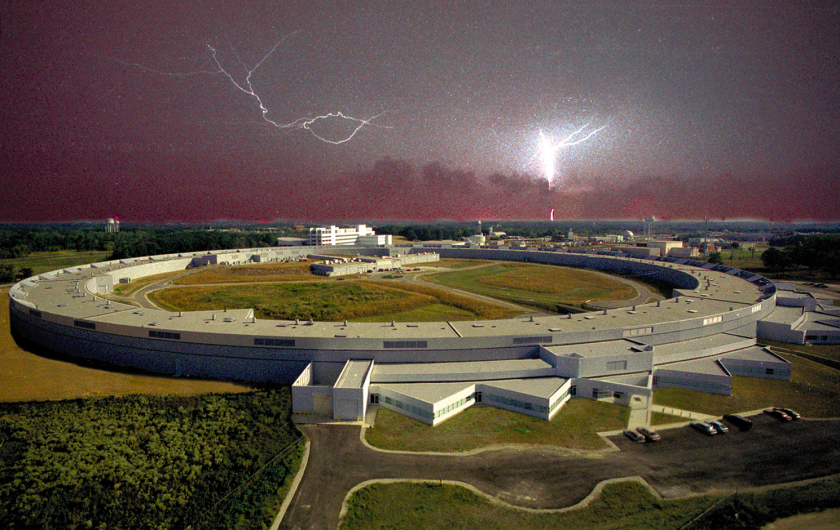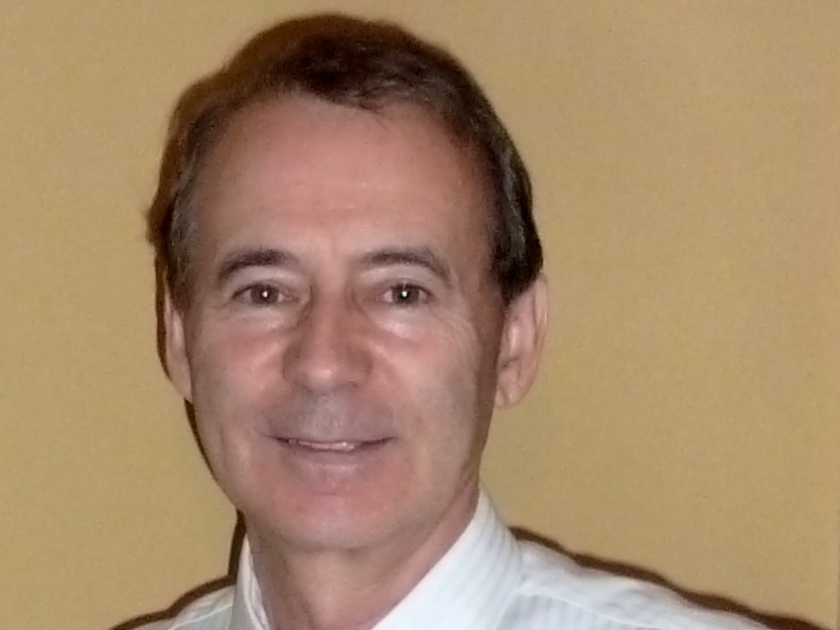D-Lecture: A Light and a Beam

The Advanced Photon Source facility illuminated by lightning. ( © Argonne National Laboratory

Alexander Zholents is the Director of the Accelerator Systems Division at Argonne National Laboratory.
Dr. Alexander Zholents from Argonne National Laboratory will present on 18th December 2014 his thoughts on "A Light and a Beam: a Theme with Variations". The presentation will be given at the lecture hall of the Wilhem-Conrad-Röntgen-Campus of HZB at 2 pm. After the presentation, we invite you to “Glühwein” and informal discussion.
What: D-Lecture
When: 14:00, 18. december 2014
Where: BESSYII, Lecture Hall
In his Distinguished Lecture, Aexander Zholents will discuss various techniques for making better beams of charged particles and beams better matched to applications. His examples will include the optical stochastic cooling, formation of the electron bunches for free-electron lasers, generation of x-rays pulses suitable for four-wave mixing experiments, laser-assisted electron beam conditioning for free-electron lasers, beam conditioning in storage rings for generation of picosecond x-ray pulses and more.
Alexander Zholents is the Director of the Accelerator Systems Division at Argonne National Laboratory. His research interests are focused on design, construction, commissioning and operations of synchrotron radiation sources and x-ray free-electron lasers.
We are happy to inform you that we will provide you with a shuttle from Wannsee to Adlershof and return. If you like to use this shuttle for one-way, return or both, then please send an e-mail to jennifer.bierbaum@helmholtz-berlin.de. The shuttle from Wannsee will leave at 1 pm and return at 4 pm (sharp).
red.
https://www.helmholtz-berlin.de/pubbin/news_seite?nid=14108;sprache=dehttp://
- Link kopieren
-
Ernst-Eckhard-Koch-Preis und Innovationspreis Synchrotronstrahlung 2025
Der Freundeskreis des HZB zeichnete auf dem 27. Nutzertreffen BESSY@HZB die Dissertation von Dr. Enggar Pramanto Wibowo (Friedrich-Alexander-Universität Erlangen-Nürnberg) aus.
Darüber hinaus wurde der Europäische Innovationspreis Synchrotronstrahlung 2025 an Prof. Tim Salditt (Georg-August-Universität Göttingen) sowie an die Professoren Danny D. Jonigk und Maximilian Ackermann (beide, Universitätsklinikum der RWTH Aachen) verliehen.
-
Synchrotron-strahlungsquellen: Werkzeugkästen für Quantentechnologien
Synchrotronstrahlungsquellen erzeugen hochbrillante Lichtpulse, von Infrarot bis zu harter Röntgenstrahlung, mit denen sich tiefe Einblicke in komplexe Materialien gewinnen lassen. Ein internationales Team hat nun im Fachjournal Advanced Functional Materials einen Überblick über Synchrotronmethoden für die Weiterentwicklung von Quantentechnologien veröffentlicht: Anhand konkreter Beispiele zeigen sie, wie diese einzigartigen Werkzeuge dazu beitragen können, das Potenzial von Quantentechnologien wie z. B. Quantencomputing zu erschließen, Produktionsbarrieren zu überwinden und den Weg für zukünftige Durchbrüche zu ebnen.
-
Neue Katalysatormaterialien auf Basis von Torf für Brennstoffzellen
Eisen-Stickstoff-Kohlenstoff-Katalysatoren haben das Potenzial, teure Platinkatalysatoren in Brennstoffzellen zu ersetzen. Dies zeigt eine Studie aus Helmholtz-Zentrum Berlin (HZB), der Physikalisch-Technischen Bundesanstalt (PTB) und der Universitäten in Tartu und Tallinn, Estland. An BESSY II beobachtete das Team, wie sich komplexe Mikrostrukturen in den Proben bilden. Anschließend analysierten sie, welche Strukturparameter für die Förderung der bevorzugten elektrochemischen Reaktionen besonders wichtig waren. Der Rohstoff für solche Katalysatoren ist gut zersetzter Torf.
